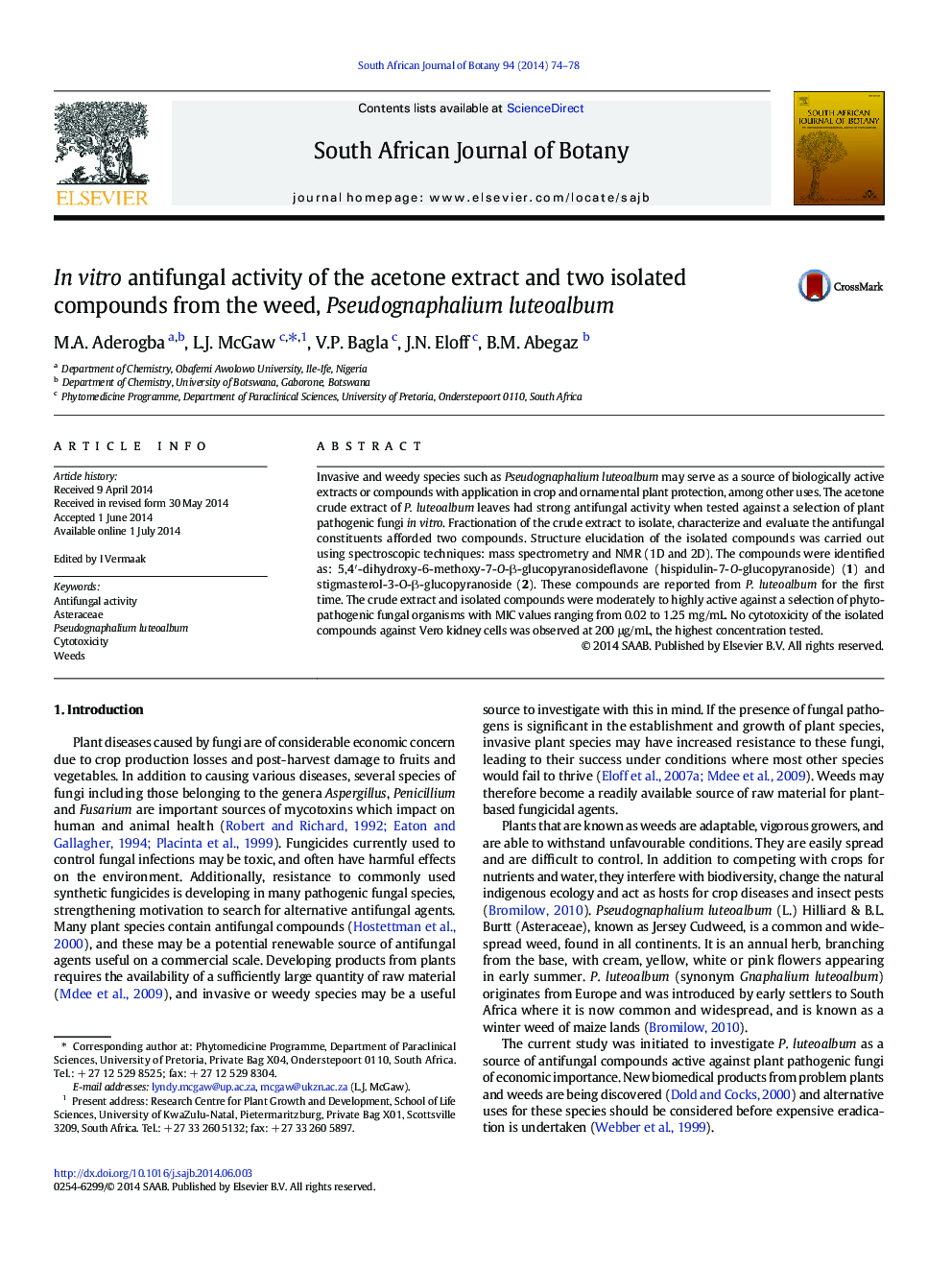| کد مقاله | کد نشریه | سال انتشار | مقاله انگلیسی | نسخه تمام متن |
|---|---|---|---|---|
| 4520663 | 1625164 | 2014 | 5 صفحه PDF | دانلود رایگان |

• The acetone extract of Pseudognaphalium luteoalbum had strong antifungal activity.
• Two compounds were isolated for the first time from P. luteoalbum.
• The extract and compounds were active against several plant pathogenic fungi.
• The isolated compounds were not cytotoxic against Vero cells.
• Invasive weeds may constitute a useful source of antifungal agents.
Invasive and weedy species such as Pseudognaphalium luteoalbum may serve as a source of biologically active extracts or compounds with application in crop and ornamental plant protection, among other uses. The acetone crude extract of P. luteoalbum leaves had strong antifungal activity when tested against a selection of plant pathogenic fungi in vitro. Fractionation of the crude extract to isolate, characterize and evaluate the antifungal constituents afforded two compounds. Structure elucidation of the isolated compounds was carried out using spectroscopic techniques: mass spectrometry and NMR (1D and 2D). The compounds were identified as: 5,4′-dihydroxy-6-methoxy-7-O-β-glucopyranosideflavone (hispidulin-7-O-glucopyranoside) (1) and stigmasterol-3-O-β-glucopyranoside (2). These compounds are reported from P. luteoalbum for the first time. The crude extract and isolated compounds were moderately to highly active against a selection of phytopathogenic fungal organisms with MIC values ranging from 0.02 to 1.25 mg/mL. No cytotoxicity of the isolated compounds against Vero kidney cells was observed at 200 μg/mL, the highest concentration tested.
Journal: South African Journal of Botany - Volume 94, September 2014, Pages 74–78